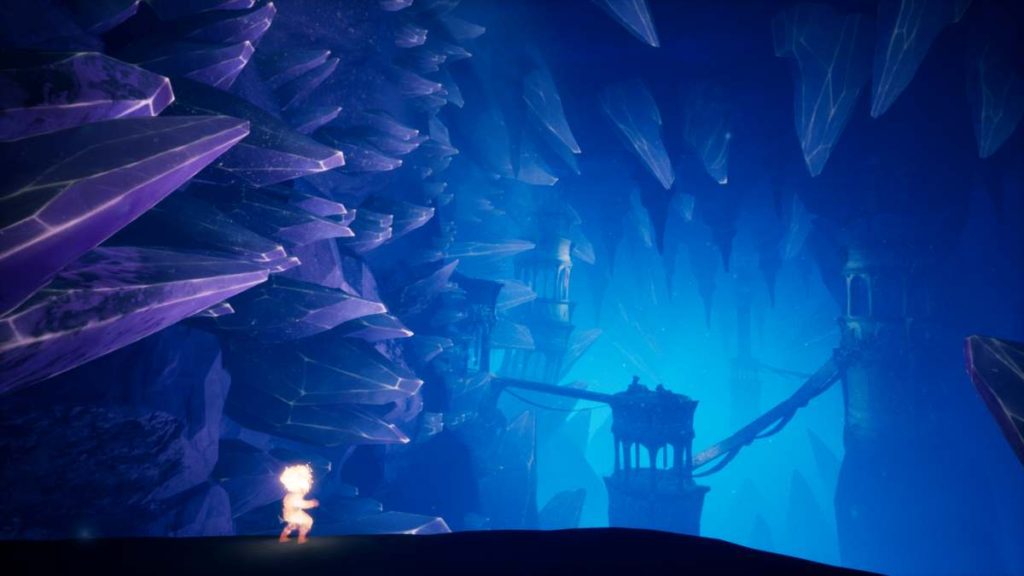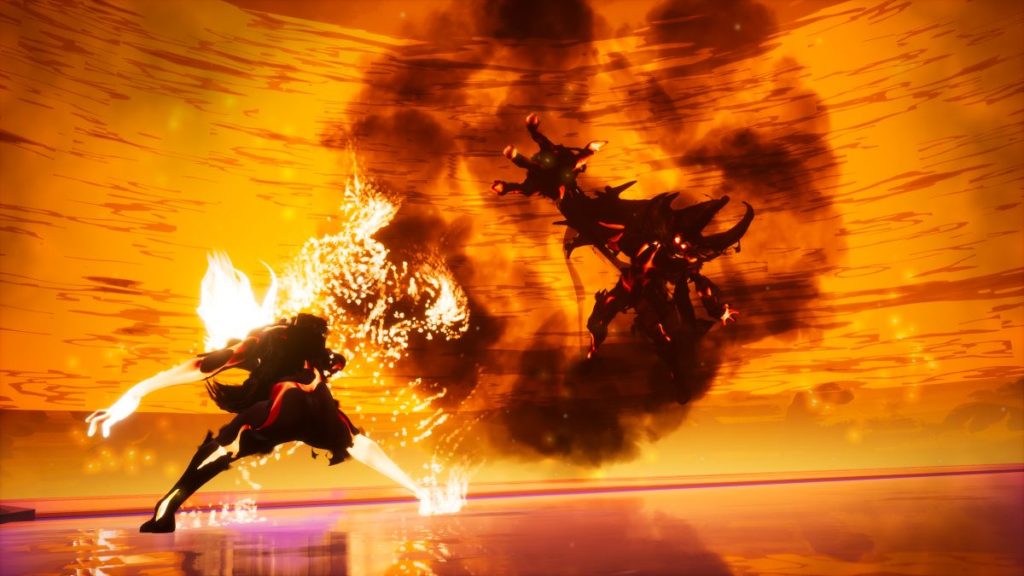While the world waits patiently for the next AAA game to hit, gamers shouldn’t be staring too long in the AAA direction and missing what’s squarely in front of them. There are a lot of smaller developed games out there in the wild, some with major funding from studios, and some that are straight-up indie. Regardless, there are plenty of gems out there in the gaming world that one could discover while one waits for a AAA game to emerge. One such game is Strayed Lights from developer Embers.
Strayed Lights is a game that bases its narrative around a light emerging from the darkness and fighting its way across multiple landscapes filled with chaotic light-changing enemies that are as challenging as they are beautiful. The game doesn’t pull its punches in its artsy pursuit to entertain, which will make it intriguing and engaging for some hardcore gamers, or as frustrating as a Dark Souls game for those who don’t enjoy too much of a hill to climb. No matter which you are, the middle ground is that it’s a fun and creative adventure that is visually intoxicating.
Let’s get this light lit.
Journey-like story
While there are no scarves involved in this adventure, Strayed Lights takes a page out of Journey’s perfect book, where visuals are complimented by silent storytelling. You are born from a light, you become a bigger light, then you are challenged to become something greater. The story unfolds with action and the silence is deafening in its creative pursuit that works in parallel with visuals. While this type of storytelling isn’t new, it does take a careful hand to craft it when you’re trying to get the player engaged with the content. Journey did this through wall paintings and the music that shaped it, and Strayed Lights traverses the same route. You can understand what’s happening, interpret the call for action at times, and you feel the narrative as it unfolds. Much like Journey, there is an over-arching layer of melancholy in the story, which draws in the gamer and firmly gets their attention locked. It’s breathtaking how well the story unfolds and how it shows you want you think it should be. That’s just good storytelling.

Now, much like a parent dangling keys in front of a child to distract them from a shot at the doctor’s office, there is something complicated and difficult waiting around the corner while the creativity of its narrative is pouring out.
Controls are controlling
The gameplay isn’t incredibly difficult to understand in Strayed Lights. You can change your light’s color with the flick of L1. You can parry with the flick of R1. You can attack with R2. Those are the main mechanics in this game, and they have the potential to drive players bonkers…well, maybe not all of them. Just some of them.
You might be thinking to yourself right now, “You named three buttons. How in the world is that difficult?” Okay, that’s fair. There are three buttons, but the amount isn’t as important as how you use them, which can quickly get franticly complicated. The enemies you meet are color-changing corrupted lights. To parry them, which is the main way to dispose of enemies, you must match their color with L1 and then deflect their attacks at the right time with R1. As you probably are aware with gaming, enemies usually don’t throw just one punch at a time. They typically throw multiple attacks in twos or threes. These enemies will attack you while they’re in one color, and then quickly change colors and attack you again. Your job is to anticipate the colors, parry at the right time, then change colors and do it again. This happens so darn quickly that sometimes it’s maddening to keep up with. Your goal in this process is to block, build up energy from the enemy’s failed attacks, then dissolve them at their weakest point. When done well, it can all be over quickly. When having multiple enemies with varied attacks coming at you, it’s far trickier.
To alleviate the moments of frustration, the game does allow you to block an enemy in a mismatched color. You just won’t take any of their energy or gain any ground in doing so. You can also attack an enemy with R2 and that does help build up energy to eventually dispose of an enemy. Now, the ability to block with any color is nice, but it does feel like you’re running through the mud when it comes to story progression. And you never want a game to feel like it’s a chore, especially one that should be a heckuva lot easier than it is.
Going back to the attack option, the R2 method doesn’t work efficiently enough to depend on it all the time, but it is a different way to change up the mechanics to make the gameplay more interesting. It’s almost like this was wedged into the gameplay to make you briefly forget that you must choose a color and then parry to get the most out of the action. That’s not a knock at all, rather it’s a compliment to the developers who clearly understand how difficult a game they have created.
While all the above might seem like I’m overly negative about the experience, I assure you that I’m not. While this game isn’t built for my attention span or my mechanical animal of a brain to work out regularly, people who enjoy games like the Dark Souls series are going to gobble this up. It’s the right amount of complication to get those insanely genius monsters to latch onto this type of experience. It’s the right amount of challenge and intensity to satisfy anyone that fits that mold.
My only legitimate complaint about this game is the open world-ness of it. While the controls are defined, the game opens itself to direction and interpretation. The environments are huge, and they aren’t the easiest to traverse. The game allows you to go explore and find hidden treasures here and there. It also allows you to easily get lost and lose direction. I’m not certain this was an intended part of the gameplay, but there isn’t anything that gives you true direction outside of ‘seek and find’. Maybe that works for some, but I found it to be a burden in a sense. I wanted more story. I wanted to be led in an almost linear fashion. My reward for fighting controls and losing repeatedly should be my earned progression, which the game should serve on a silver platter. I stumbled upon these moments, yet I was not led to them. The stumbling included repetitive enemies with the occasional boss or new character story. I just wish there was a bit more direction to the gameplay. I love exploring but not if the crux of the fighting/progression is a chore.

On the backend of the gameplay, to help feel like you’re pushing forward in the right spot and getting properly rewarded, the skills tree is well-placed. It creates the right amount of motivation to keep you moving in the makes sure that your strengths are magnified when you are at your weakest. It’s fascinating how well the skills work. It’s also expected that you gather XP elements during your exploration and fighting with enemies to spend on said skills. Maybe that was the hook intended when creating huge explorable worlds. That’s a good hook. Almost like dangling keys.
One enormous plus in this game is the bosses. They’re creative, tough, and they come in a variety of flavors. They all have their own style of fighting too, so you’re going to get a good challenge from each. At the very least, you’ll know that you earned progression in the game when you take down an enemy boss. I did enjoy the variety of bosses very much and they felt like the juice was worth every bit of the squeeze.
Speaking of juice, this game has plenty under the hood.
Visually Stunning
Strayed Lights is gorgeous. Developer Embers not only captured emotion through its light characters, and they don’t have to do too much to get you in the feels, but they also managed to tap into the PS5’s ray tracing capabilities to drive home the environments and reinforce the light theme. While it’s not at the level of a Ghost of Tsushima or God of War, it’s appropriate with what the narrative is trying to become as you progress. It’s all about light, mostly what you traverse is dark, which illuminates better. That whole light theme, ya know?
Equally, if not better than the visuals is the music. The soundtrack is stunning, well-written, and placed within the context of the adventure. The emotions hit when they need to, and the action sequences get some much-needed giddy-up through the music. It’s rare that music outperforms or even matches the intensity of visuals, but here we are now.
On the presentation side of the tracks, Strayed Lights is every bit as advertised.
On that note, let’s wrap up.
Conclusion
Strayed Lights is a challenge with enemies and with controls. Depending on what type of gamer you might be, this could be a positive or a negative. For me, it was small doses of progression and motivation to see the story progress that kept me playing.





